A large painting depicting Old Court House Street, Calcutta, after the print by Thomas Daniell
Chinese School, probably Canton, 19th Centurygouache on paper, Chinese patterned silk border, framed
137.5 x 210 cm.; with frame 150 x 225 cm.FootnotesProvenance
A private San Francisco collection, assembled in the 1960s and 70s.
Bonhams, San Francisco, Fine Asian Works of Art, 29th June 2009, lot 8281.
In the collection of Ed Hardy, San Francisco.
Abell Auction Company, Los Angeles, USA, March 2023.
Our painting was probably executed between 1820 and 1860, on the basis of comparison with the development of Chinese oil paintings depicting Canton. From the late 18th Century views of the waterfront there were produced by local artists for western merchants and ship owners visiting the port. At first they were painted in bodycolour on paper, fine linens or silk, but canvas and oil paints appear to have been introduced to the Cantonese artists' studios in the last quarter of the 18th century.
William Sargent notes: 'Exactly how Chinese artists learned western techniques and what their attitudes were towards their customers is not known [...] There are no records of East Asian artists studying under western teachers, other than in schools established in Asia by the Church specifically for the production of religious art. However, European artists did visit Asia, and their presence in coastal trading ports eventually influenced local imitators. It is more likely, however, that Asian artists learned western techniques from copying prints, book illustrations or other secondary sources'. A watercolour from a series of one hundred, in the Victoria and Albert Museum, depicting trades, produced in Canton, circa 1790, shows a Chinese artist painting on to glass with a European engraving propped up in front of him (see William R. Sargent, 'Asia in Europe: Chinese Paintings for the West', in A. Jackson, A. Jaffer (edd.), Encounters: the Meeting of Asia and Europe, 1500-1800, London 2004, pp. 274-275, and plate 21.2). For another example, circa 1800, see P. Conner, Paintings of the China Trade: the Sze Yuan Tang Collection of Historic Paintings, Hong Kong 2013, p. 118, no. 103.
A Chinese porcelain dish of circa 1795 bears a design derived from an English engraving of 1794 of Fort William (the Company settlement which became Calcutta); the service of which the dish was part was probably produced for export to India for the use of Company employees (see P. Conner, The China Trade, 1600-1860, Brighton 1986, pp. 100-101, nos. 135 and 136). A second example is a painting on linen or silk by a Chinese artist of the late 18th Century, after a print depicting Stockholm harbour by the Swedish artist Olaf Jacobsson Arre (1731-1809). Conner notes that 'while following the original engraving in most respects, the Cantonese export artist has lent a decidedly Chinese quality to some of the ships in the harbour' (see P. Conner, op. cit. (2013), p. 85, no. 74).
The copying of a Daniell print here represents an interesting complication of the direction of influence, for the Daniells were amongst the first British artists to visit China (in their case, on their homeward journey from India in 1793-94 as part of a convoy including Lord Macartney, himself returning from an embassy). Thomas Daniell produced views of the waterfront at Canton (from which prints were derived): see P. Conner, The Hongs of Canton: Western Merchants in South China, 1700-1900, as seen in Chinese Export Paintings, London 2009, pp. 61-63, and figs. 2.33 and 2.34. However, as Sargent and Conner note, prints and illustrations seem to have been the main source for the Asian artists.
The Cantonese artists, in their frequent depictions of the Hongs (waterfront offices and warehouses) at Canton and the European 'factories' there, were used to portraying streets and buildings, as well as the population filling them: see, most strikingly in relation to our painting, an 1807 work showing a street scene with officials arriving outside the hongs before the trial of European seamen in Canton (see P. Conner, 2013, p. 142, no. 127). Here then, in our painting, they combine their source in a European print with the sort of scenes they were already painting of their home background - while doubtless being aware of the commercial possibilities of producing a view of Calcutta for British consumption. While our painting is still in gouache on paper, its scale is clearly related to a new familiarity with Western oil paintings of the late 18th Century.
The view in our painting is a close copy of the print (coloured etching with aquatint) depicting Old Court House Street from the north, no. 9 from Thomas Daniell's Views of Calcutta, 1788 (illustrated in, for example, M. Archer, Early Views of India: the Picturesque Journeys of Thomas and William Daniell 1786-1794, London 1980, fig. 12; or J. P. Losty, Calcutta: City of Palaces, London 1990, p. 57, fig. 27).
Archer writes in his caption:
Old Court House Street ran north-south from the Old Court House in Tank Square along the eastern side of Government House to the Maidan. Its comfortable mansions of many different designs are set in compounds on either side of the road. The street is busy with varying forms of Indian and British transport - an elephant, a canopied bullock carriage, sedan chairs, palanquins and carriages. People of many types, including an ascetic, mingle in the road.
A large painting depicting Old Court House Street, Calcutta, after the print by Thomas Daniell
Chinese School, probably Canton, 19th Centurygouache on paper, Chinese patterned silk border, framed
137.5 x 210 cm.; with frame 150 x 225 cm.FootnotesProvenance
A private San Francisco collection, assembled in the 1960s and 70s.
Bonhams, San Francisco, Fine Asian Works of Art, 29th June 2009, lot 8281.
In the collection of Ed Hardy, San Francisco.
Abell Auction Company, Los Angeles, USA, March 2023.
Our painting was probably executed between 1820 and 1860, on the basis of comparison with the development of Chinese oil paintings depicting Canton. From the late 18th Century views of the waterfront there were produced by local artists for western merchants and ship owners visiting the port. At first they were painted in bodycolour on paper, fine linens or silk, but canvas and oil paints appear to have been introduced to the Cantonese artists' studios in the last quarter of the 18th century.
William Sargent notes: 'Exactly how Chinese artists learned western techniques and what their attitudes were towards their customers is not known [...] There are no records of East Asian artists studying under western teachers, other than in schools established in Asia by the Church specifically for the production of religious art. However, European artists did visit Asia, and their presence in coastal trading ports eventually influenced local imitators. It is more likely, however, that Asian artists learned western techniques from copying prints, book illustrations or other secondary sources'. A watercolour from a series of one hundred, in the Victoria and Albert Museum, depicting trades, produced in Canton, circa 1790, shows a Chinese artist painting on to glass with a European engraving propped up in front of him (see William R. Sargent, 'Asia in Europe: Chinese Paintings for the West', in A. Jackson, A. Jaffer (edd.), Encounters: the Meeting of Asia and Europe, 1500-1800, London 2004, pp. 274-275, and plate 21.2). For another example, circa 1800, see P. Conner, Paintings of the China Trade: the Sze Yuan Tang Collection of Historic Paintings, Hong Kong 2013, p. 118, no. 103.
A Chinese porcelain dish of circa 1795 bears a design derived from an English engraving of 1794 of Fort William (the Company settlement which became Calcutta); the service of which the dish was part was probably produced for export to India for the use of Company employees (see P. Conner, The China Trade, 1600-1860, Brighton 1986, pp. 100-101, nos. 135 and 136). A second example is a painting on linen or silk by a Chinese artist of the late 18th Century, after a print depicting Stockholm harbour by the Swedish artist Olaf Jacobsson Arre (1731-1809). Conner notes that 'while following the original engraving in most respects, the Cantonese export artist has lent a decidedly Chinese quality to some of the ships in the harbour' (see P. Conner, op. cit. (2013), p. 85, no. 74).
The copying of a Daniell print here represents an interesting complication of the direction of influence, for the Daniells were amongst the first British artists to visit China (in their case, on their homeward journey from India in 1793-94 as part of a convoy including Lord Macartney, himself returning from an embassy). Thomas Daniell produced views of the waterfront at Canton (from which prints were derived): see P. Conner, The Hongs of Canton: Western Merchants in South China, 1700-1900, as seen in Chinese Export Paintings, London 2009, pp. 61-63, and figs. 2.33 and 2.34. However, as Sargent and Conner note, prints and illustrations seem to have been the main source for the Asian artists.
The Cantonese artists, in their frequent depictions of the Hongs (waterfront offices and warehouses) at Canton and the European 'factories' there, were used to portraying streets and buildings, as well as the population filling them: see, most strikingly in relation to our painting, an 1807 work showing a street scene with officials arriving outside the hongs before the trial of European seamen in Canton (see P. Conner, 2013, p. 142, no. 127). Here then, in our painting, they combine their source in a European print with the sort of scenes they were already painting of their home background - while doubtless being aware of the commercial possibilities of producing a view of Calcutta for British consumption. While our painting is still in gouache on paper, its scale is clearly related to a new familiarity with Western oil paintings of the late 18th Century.
The view in our painting is a close copy of the print (coloured etching with aquatint) depicting Old Court House Street from the north, no. 9 from Thomas Daniell's Views of Calcutta, 1788 (illustrated in, for example, M. Archer, Early Views of India: the Picturesque Journeys of Thomas and William Daniell 1786-1794, London 1980, fig. 12; or J. P. Losty, Calcutta: City of Palaces, London 1990, p. 57, fig. 27).
Archer writes in his caption:
Old Court House Street ran north-south from the Old Court House in Tank Square along the eastern side of Government House to the Maidan. Its comfortable mansions of many different designs are set in compounds on either side of the road. The street is busy with varying forms of Indian and British transport - an elephant, a canopied bullock carriage, sedan chairs, palanquins and carriages. People of many types, including an ascetic, mingle in the road.
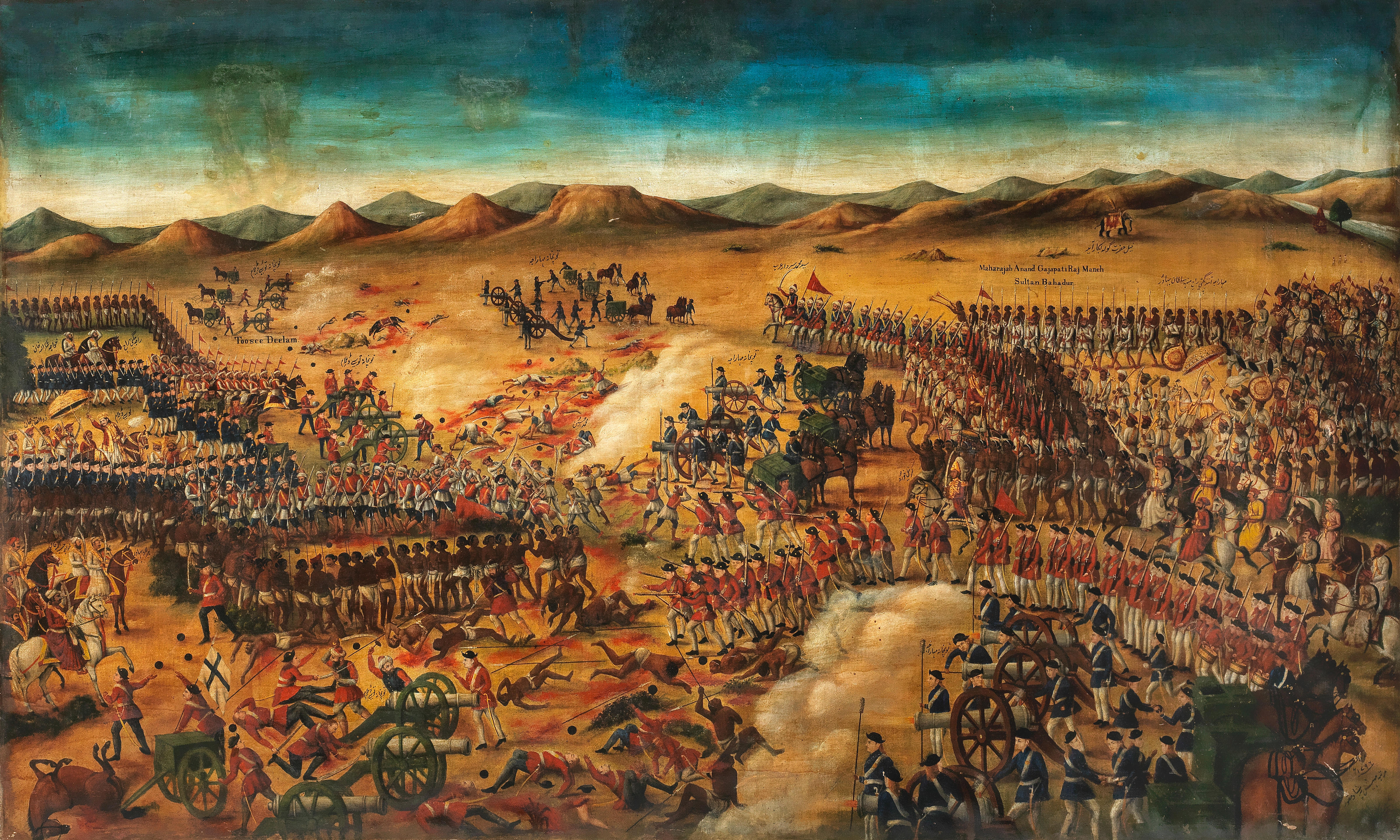




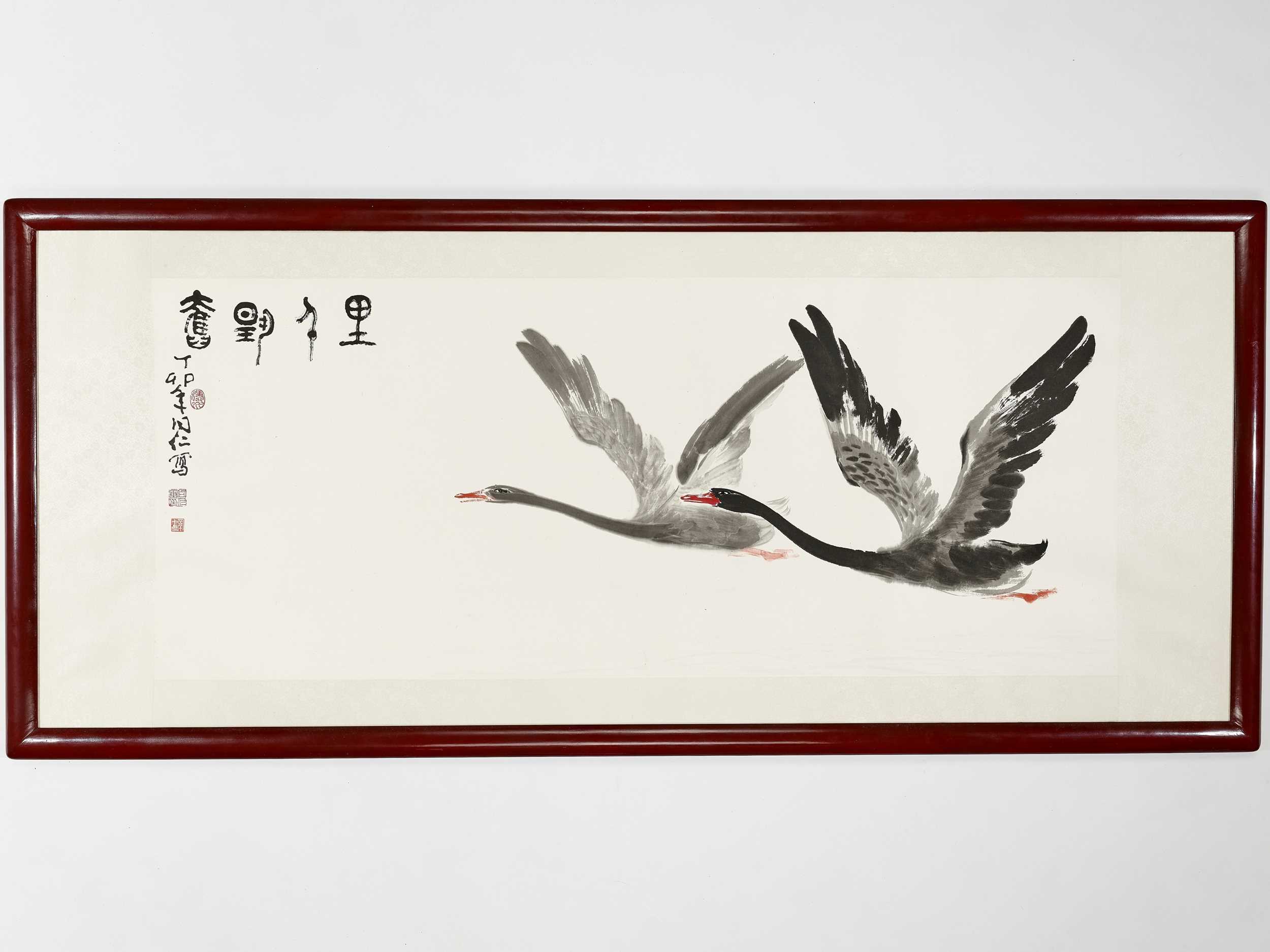
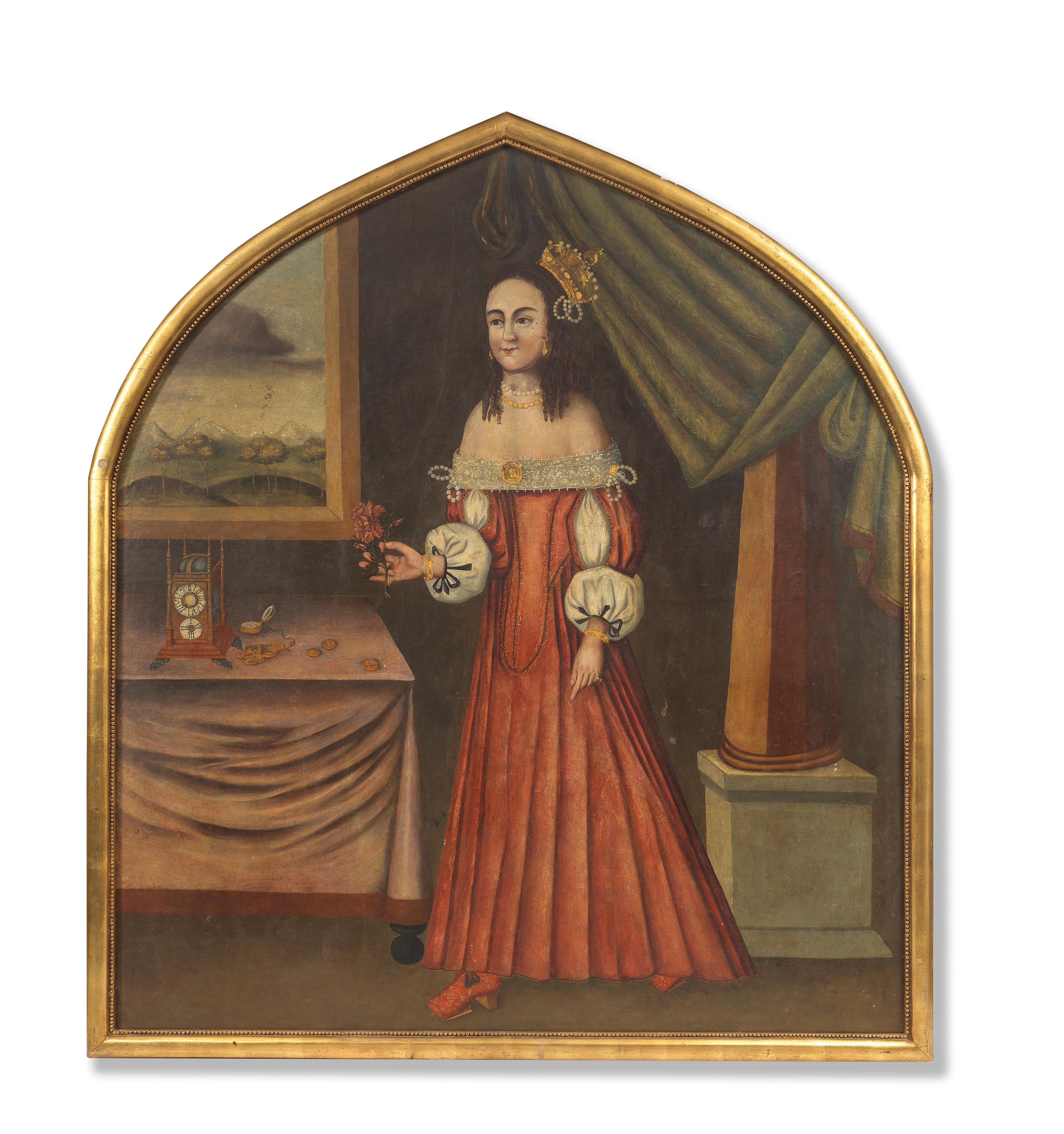


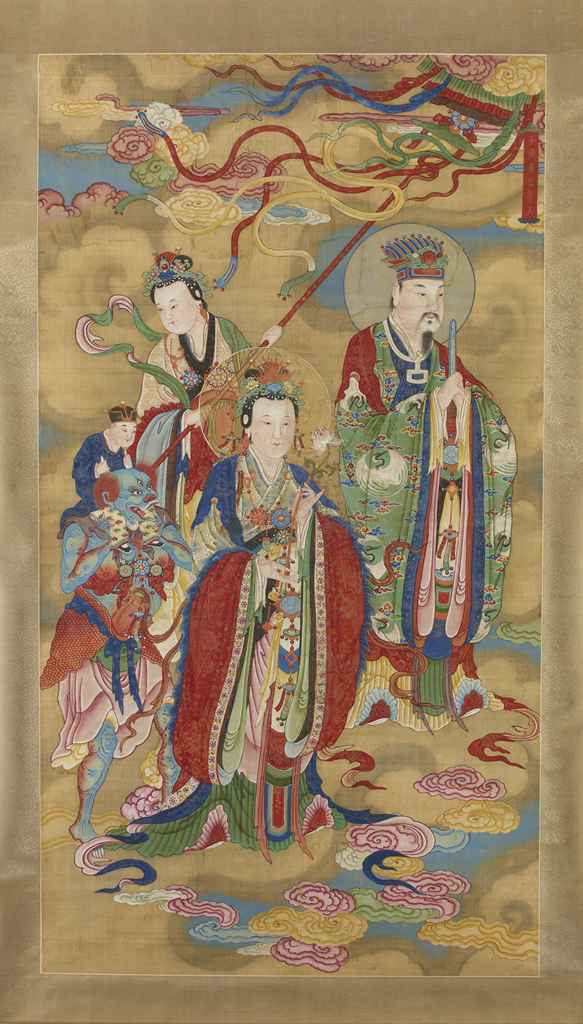
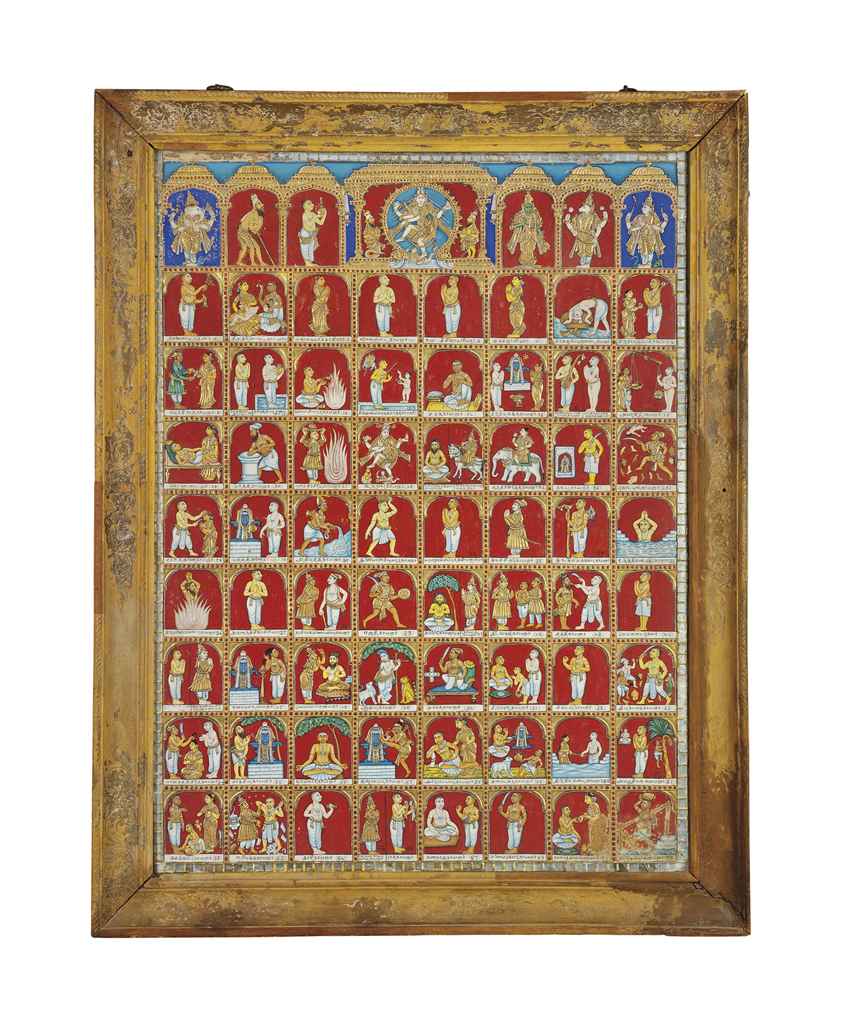
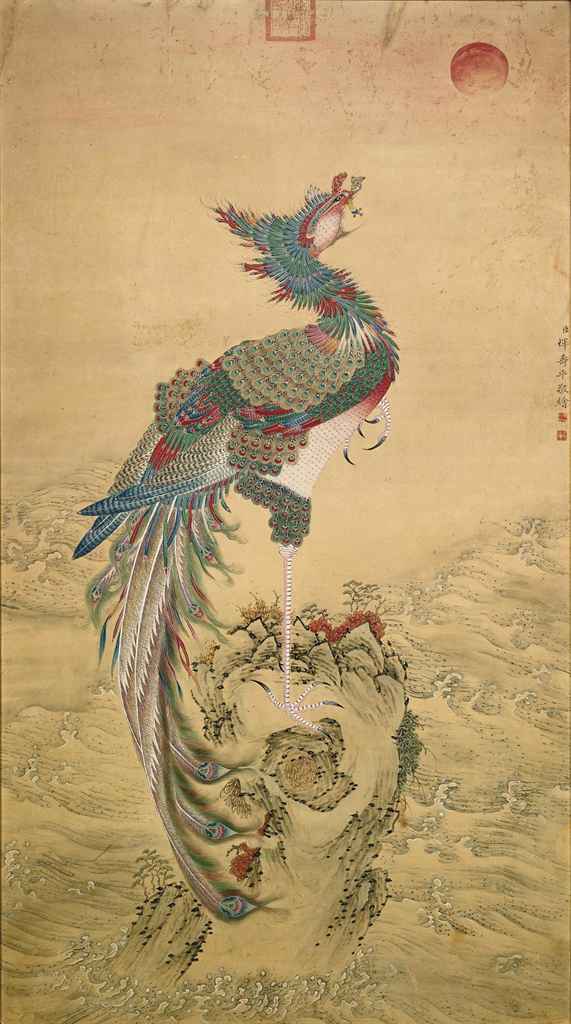

Try LotSearch and its premium features for 7 days - without any costs!
Be notified automatically about new items in upcoming auctions.
Create an alert